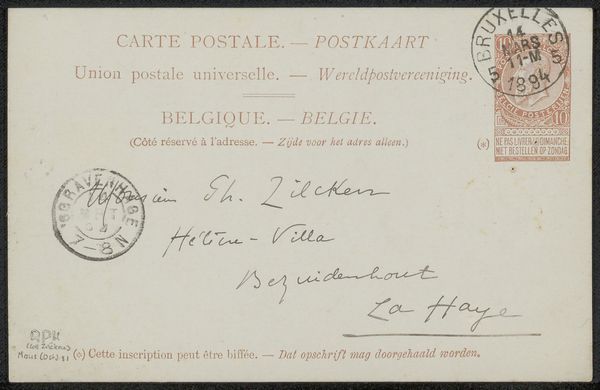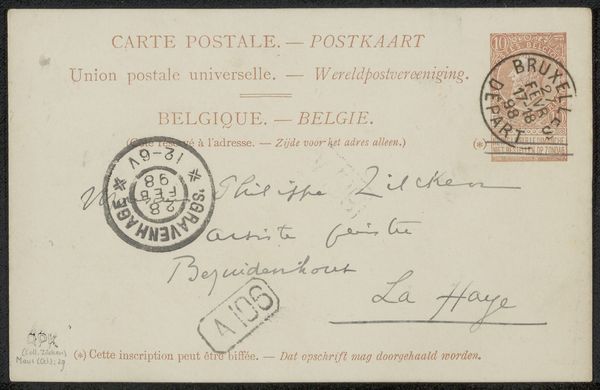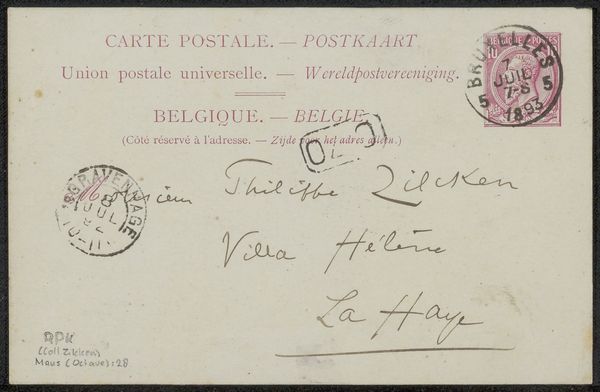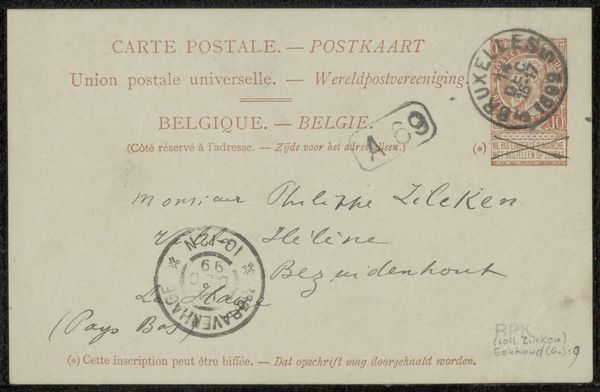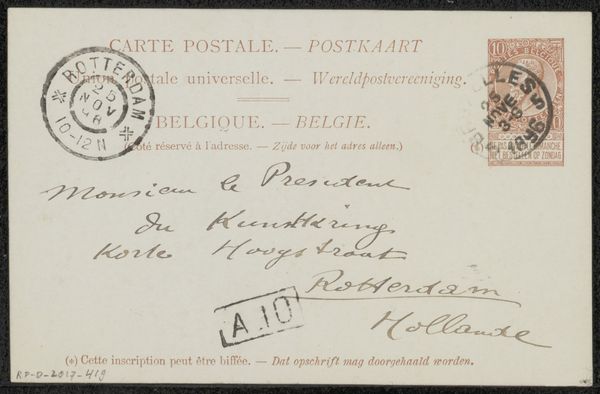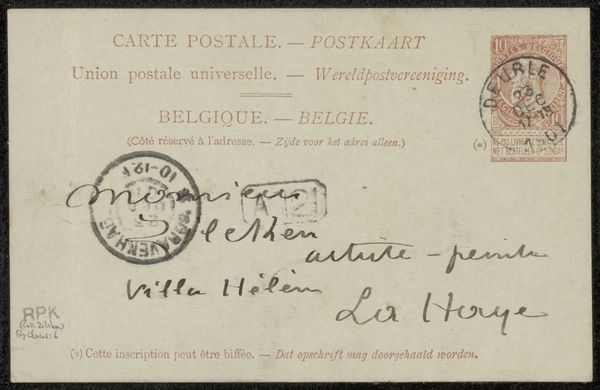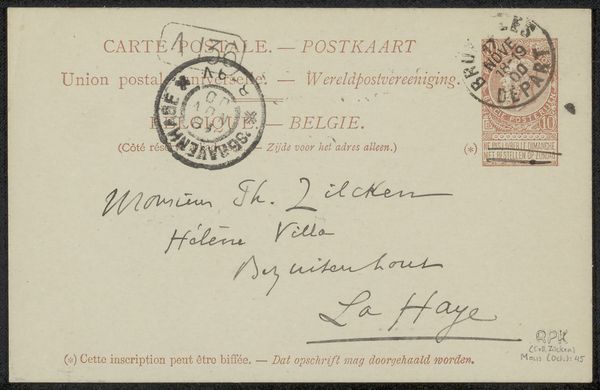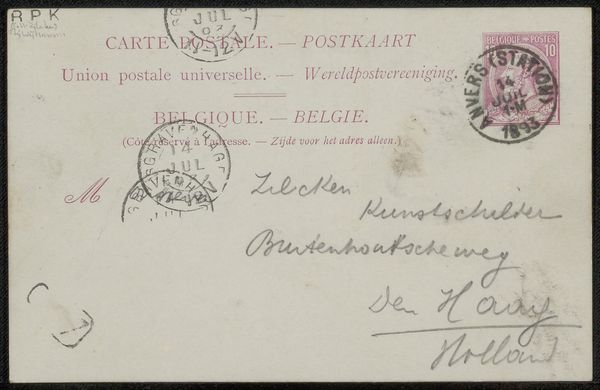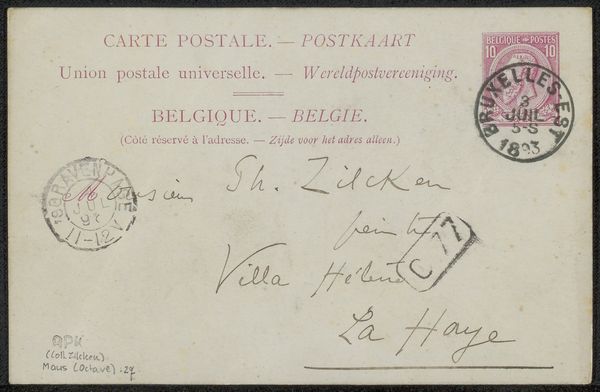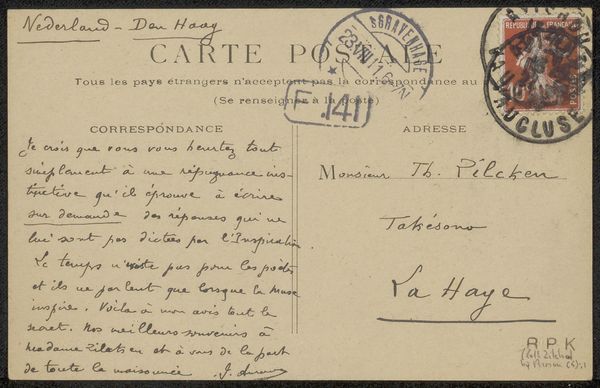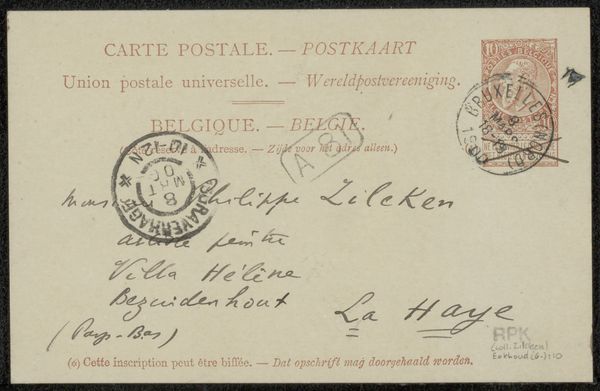
Copyright: Rijks Museum: Open Domain
Curator: Here we have "Briefkaart aan Philip Zilcken," a postcard addressed to Philip Zilcken dating from before 1913, likely crafted by Octave Maus using pen and ink on paper. Immediately striking, don't you think? It has an almost melancholic feeling. Editor: Yes, melancholic seems right. The material itself is incredibly mundane: a pre-printed postcard form, really. We take the ease of sending mail for granted now, but the standardized format shows an early industrial effort to make communication routine. The stamp, the printed text, everything becomes about efficiency. Curator: But despite the mechanization, it still carries an intimate, hand-written message. It feels incredibly personal to receive, doesn't it? Editor: The handwritten aspect clashes productively with the industrial. I wonder about the labor and distribution involved in the printing and processing of postcards at that time. Were they mass-produced by machine or set by hand? Each impression will carry tiny unique variations of that stamp from use and perhaps reveal social or labor conditions. Curator: Intriguing thoughts! But, look closely at the placement of the writing. Notice how it’s placed carefully within the provided lines, adhering to certain established formats while still embodying its own distinctive personality. It's a fleeting moment captured through carefully selected prose meant for a specific person at a certain moment. There’s something poignant in its transience, its humanness. Editor: Certainly, but consider the paper stock itself –likely inexpensive and produced at a massive scale to accommodate the postcard craze. The seemingly intimate message exists because of industrialized global distribution, blurring lines between the personal and mass-produced, and maybe complicating your notion of simple, "humanness," too. Curator: Maybe, but regardless, there’s a certain magic contained within the material of this card and inscription—a dialogue with someone else through time. It encapsulates not only personal interaction but reflects an entire system and cultural attitude present within the materials themselves. Editor: Absolutely, and these "artefacts of distribution," if you like, reveal stories that standard artworks frequently overlook or actively obfuscate, emphasizing material, and the production as part of that story to reconstruct its history. The cultural and economic exchanges enabled by even the humblest postcard, right?
Comments
No comments
Be the first to comment and join the conversation on the ultimate creative platform.


